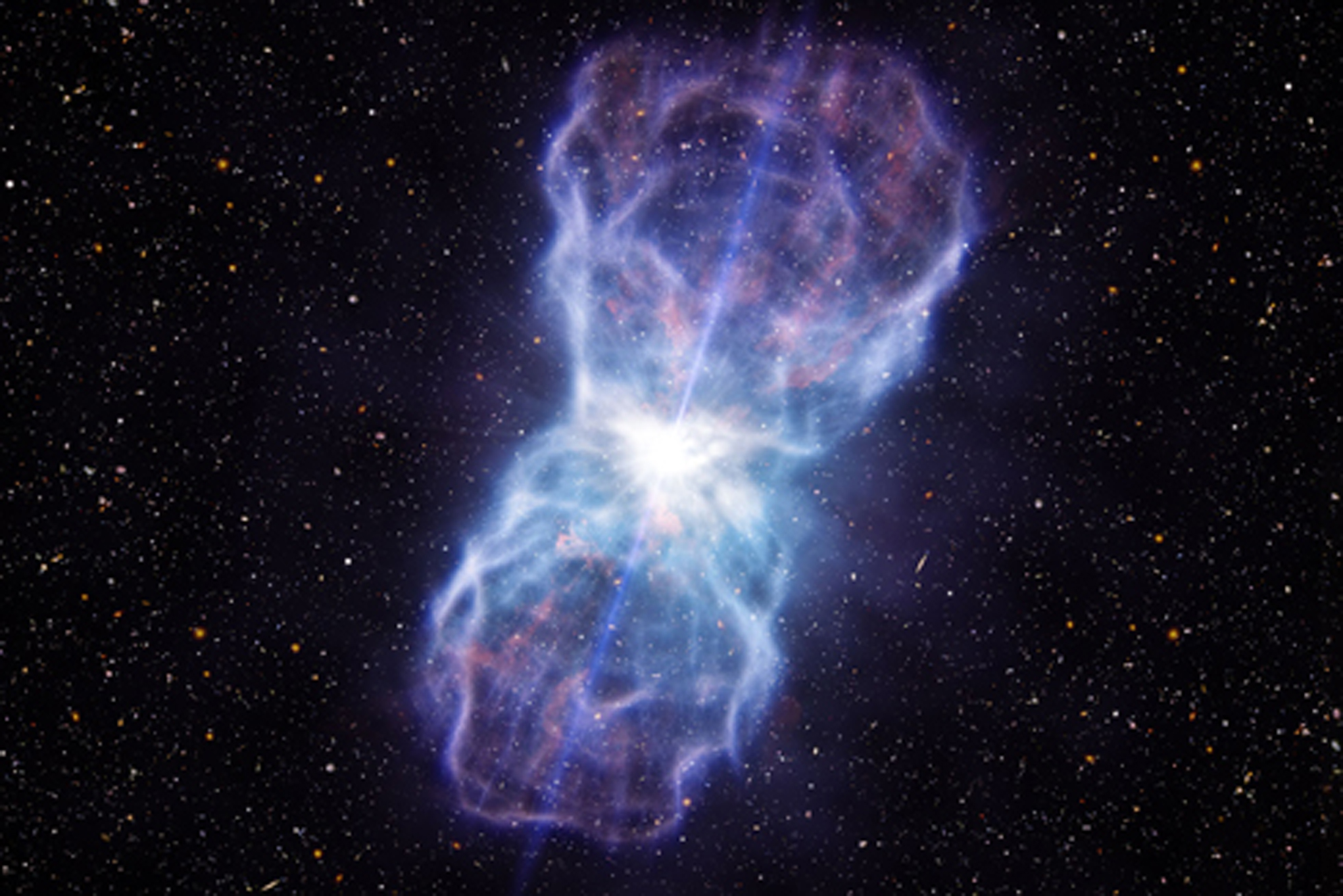Largest recorded quasar outflow could be key to answering galaxy-sized questions

Virginia Tech physics researchers have discovered a quasar with the most energetic outflow ever seen, a finding that may answer several questions including how the mass of a galaxy is linked to its central black hole mass and why there are so few large galaxies in the universe.
The team is led by Nahum Arav, associate professor of physics; and also includes Benoit Borguet, a post-doctoral researcher now at the University of Liege, Belgium; Doug Edmonds of Richmond, Va., and Carter Chamberlain of Wrentham, Mass., both physics Ph.D. students and graduate research assistants; and Chris Benn, a collaborator who works with the Isaac Newton Group of Telescopes in Spain.
The team has studied the quasar known as SDSS J1106+1939 in great detail using the European Southern Observatory’s Very Large Telescope in Paranal, Chile – the world’s most advanced visible-light astronomical observatory, and found the most energetic quasar outflow ever discovered. The rate that energy is carried away by the huge mass of material ejected is equivalent to 2 trillion times the power output of the sun.
“This is about 100 times higher than the total power output of the Milky Way galaxy - it’s a real monster outflow,” said Arav.
Theorists have predicted energy flows of this magnitude and simulations have suggested the impact of these outflows on the galaxies around them may resolve several enigmas in modern cosmology.
“For the last 15 years many theorists have said that if there were such powerful outflows it would help answer many questions on the formation of galaxies, on the behavior of black holes, and on the enrichment of the intergalactic medium with elements other than hydrogen and helium,” Arav said. “This discovery means we can better explain the formation of galaxies,” said Arav. “There are hundreds of people doing the theoretical side of the work. They hypothesize outflows in their simulations, and now we’ve found an outflow in the magnitude that has only been theorized in the past. Now they can refine their already impressive models and base them on empirical data.”
Quasars are light phenomenon produced as material falls into a black hole producing a huge amount of energy. The bigger the black hole, the bigger the quasar. The Milky Way, according to Arav, is a big galaxy with a ‘smallish’ black hole. The black hole at the heart of quasar SDSS J1106-1939 is massive, estimated to be a thousand times heavier than the black hole in the Milky Way. And while black holes are noted for pulling material in, quasars accelerate some of the material and eject it at high speed. The larger the quasar, the more material it can take, the higher speed it can accelerate it, and the further it can eject the material.
“Quasars have been known for 40 years,” Arav explained. “We were able to figure out how to measure the mass of mechanical energy the black hole is putting out – by calculating the size of the outflow, how far away from the black hole it was and how much mass it had per unit area.”
The quasar’s outflow is at least five times more powerful than the previous record holder, also discovered by Arav and his research group in 2009, and material from the outflow is inferred to be about a thousand light years away from the black hole at the heart of quasar SDSS J1106-1939. Every year, according to the team’s analysis, a mass of more than 400 times that of the sun, streams away from the quasar moving at 8,000 kilometers per second.
“I’ve been looking for something like this for a decade,” says Arav, “so it’s thrilling to finally find one of the monster outflows that have been predicted!”
Compiled with information from the European Southern Observatory with permission.




